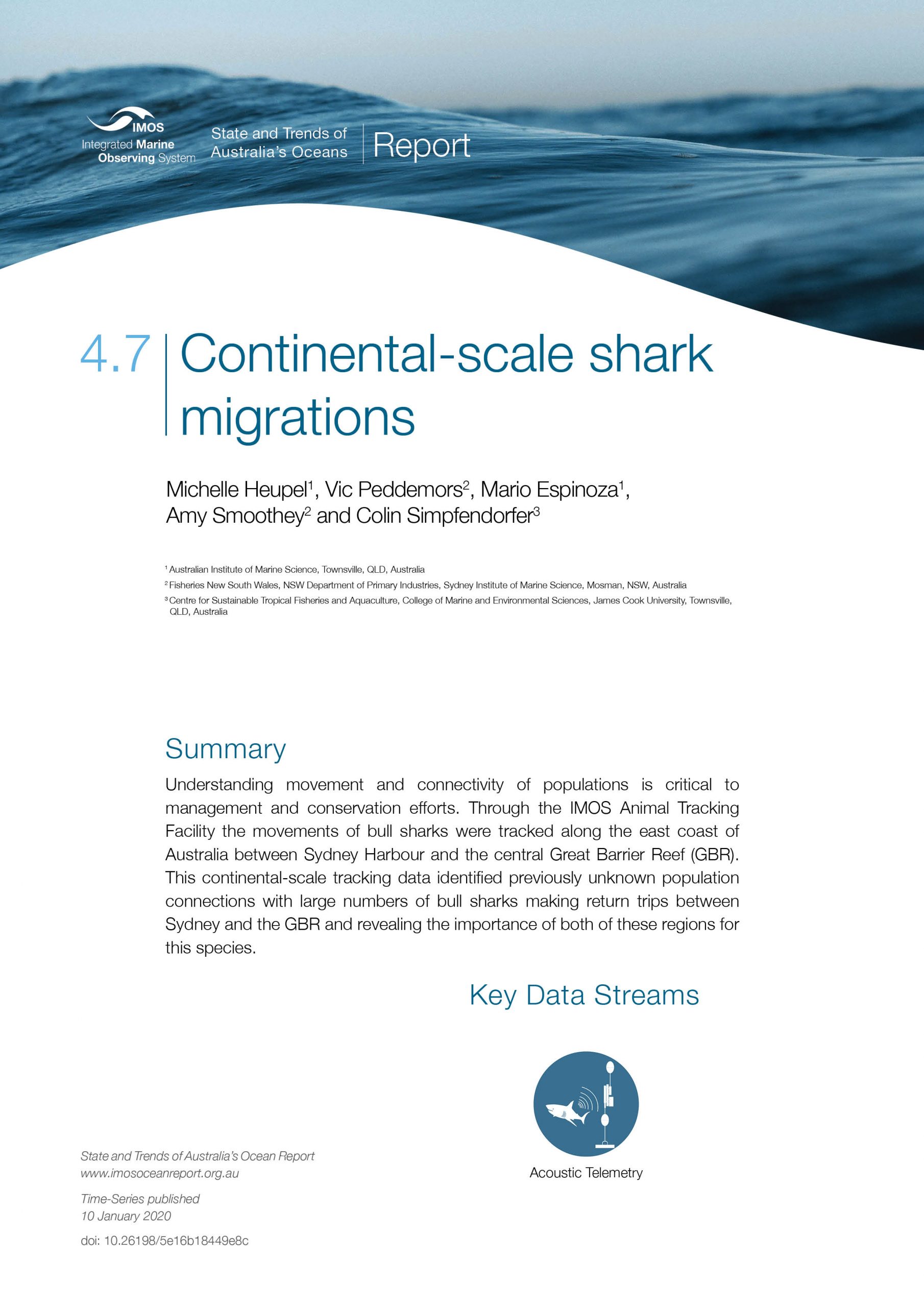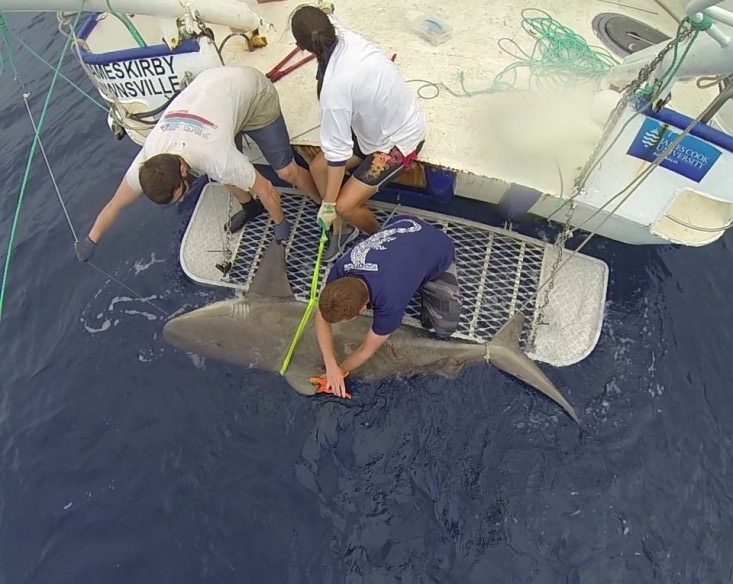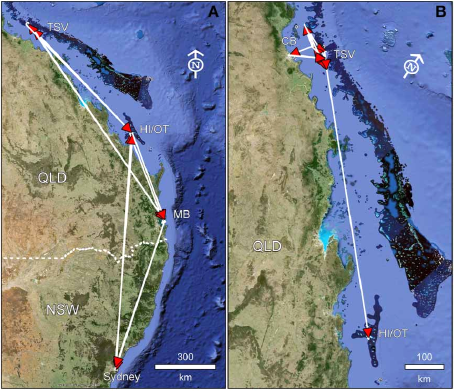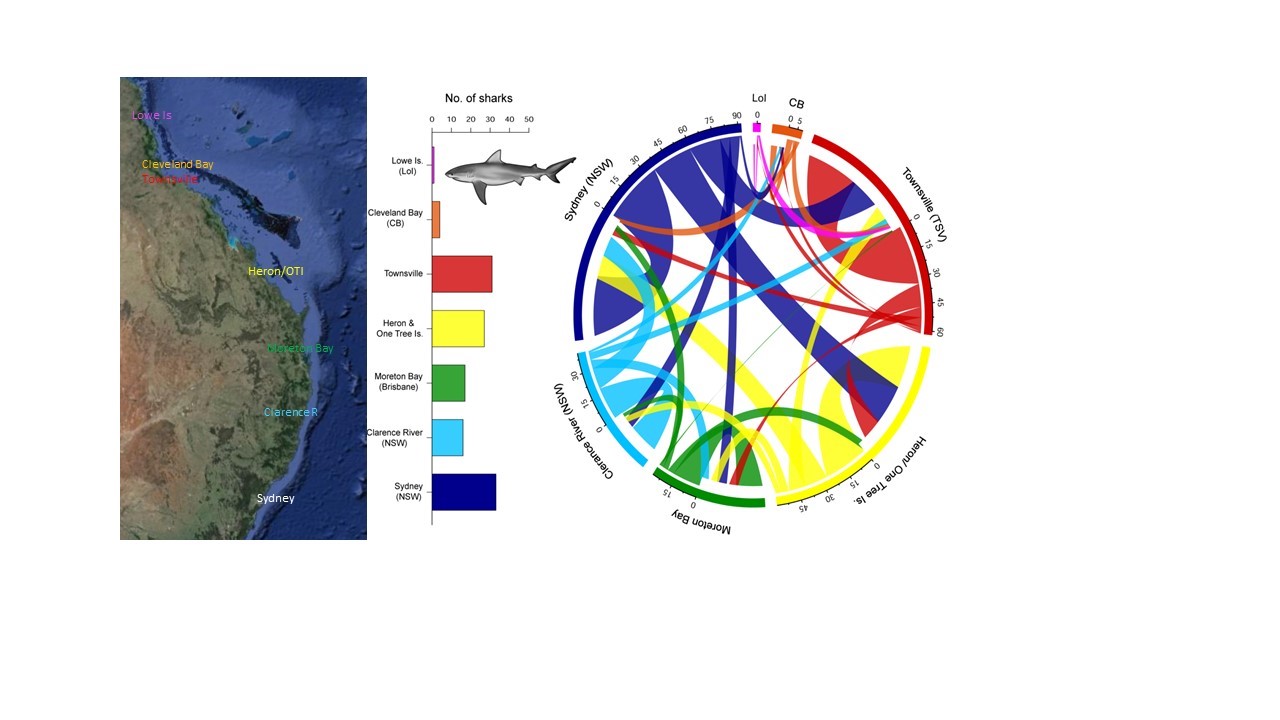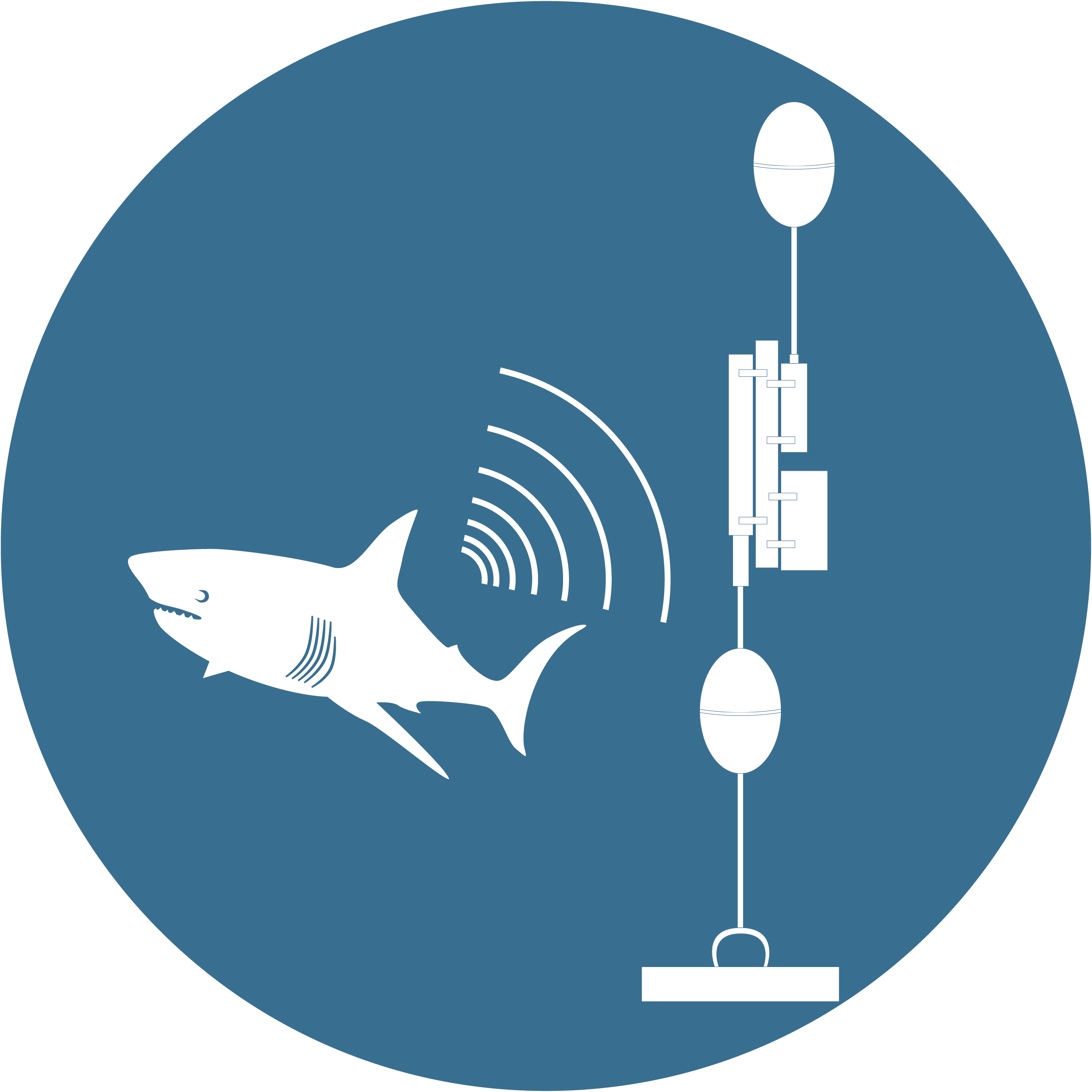Contributors
Michelle Heupel1
Vic Peddemors2
Mario Espinoza1
Amy Smoothey2
Colin Simpfendorfer3
1 Australian Institute of Marine Science, Townsville, QLD, Australia
2 Fisheries New South Wales, NSW Department of Primary Industries, Sydney Institute of Marine Science, Mosman, NSW, Australia
3 Centre for Sustainable Tropical Fisheries and Aquaculture, College of Marine and Environmental Sciences, James Cook University, Townsville, QLD, Australia
Key Information
Understanding movement and connectivity of populations is critical to management and conservation efforts. Through the IMOS Animal Tracking Facility the movements of bull sharks were tracked along the east coast of Australia between Sydney Harbour and the central Great Barrier Reef (GBR). This continental-scale tracking data identified previously unknown population connections with large numbers of bull sharks making return trips between Sydney and the GBR and revealing the importance of both of these regions for this species.
Keywords
Sydney Harbour, southern Great Barrier Reef, Bull Sharks,
Continental-scale shark migrations
Download this Time Series Report
Citing this report:
Heupel M, Peddemors V, Espinoza M, Smoothey A, Simpfendorfer (2020). Continental-scale shark migrations. In Richardson A.J, Eriksen R, Moltmann T, Hodgson-Johnston I, Wallis J.R. (Eds). State and Trends of Australia’s Ocean Report. doi: 10.26198/5e16b18449e8c
doi: 10.26198/5e16b18449e8c
